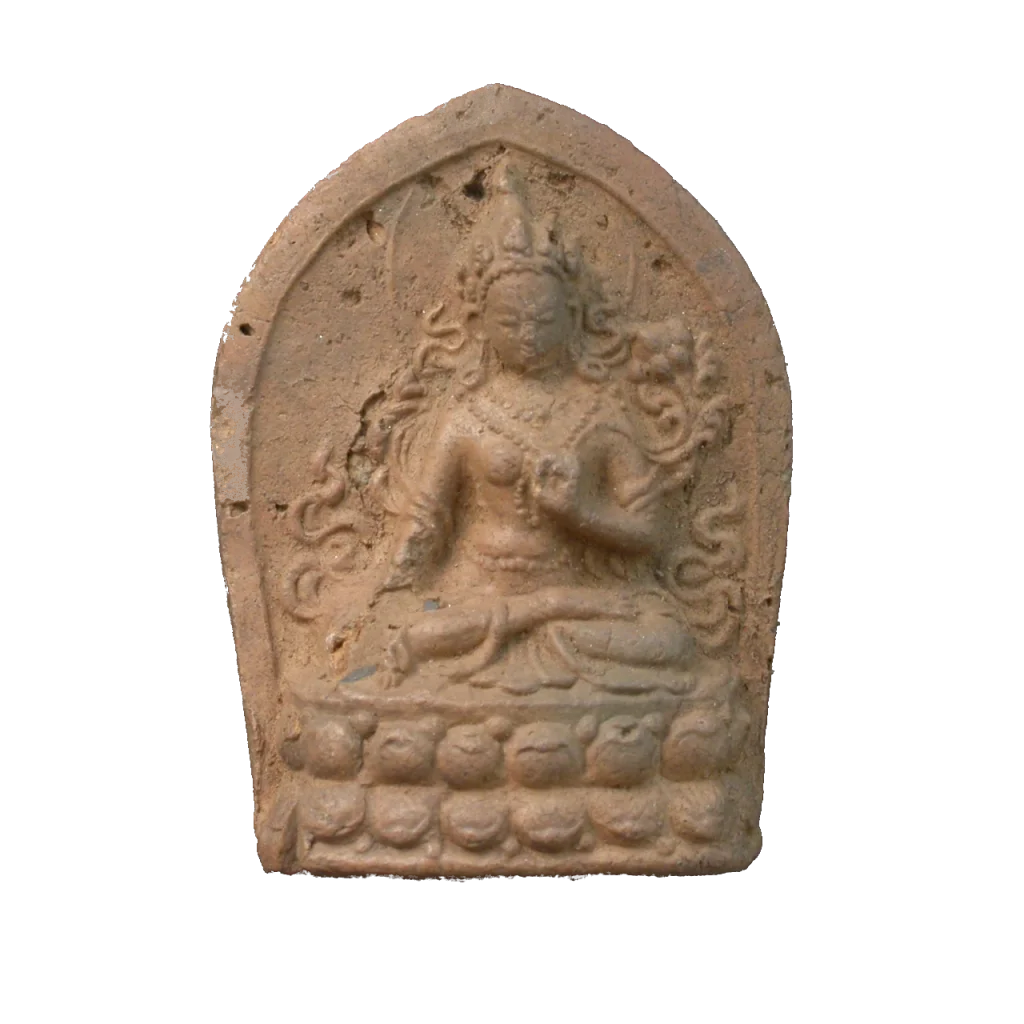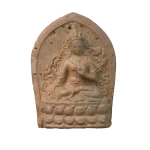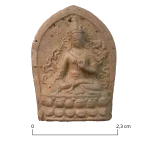
Tsatsa with the Depiction of Tara
Location Karakorum
Dating 13th-14th cent.
Epoch Mongolian empire
Material Clay
Technique Formed
Type Excavation find
Description
Tsatsas are offerings that are frequently encountered in Buddhist environments and continue to be so to this day. They are moulded out of clay, and the ashes of Buddhist teachers or saints are often added. Making them with the help of moulds is a ritual or a meditation in action, during which mantras are usually recited. This is said to help in attaining Buddhahood. After their production, Tsatsas are placed in special places, such as stupas or sacred places in nature. They can have different forms. Often they depict the Buddha or Bodhisattvas. Another common form is the representation of different stupas.
This object was deposited in the foundation of the central stupa of the Great Hall as a construction offering, along with approximately 100,000 other tsatsas. This one, however, depicts the deity Tara, who, according to legend, was born out of the tears of Avalokiteshvara, the bodhisattva of infinite compassion. She is a female protective deity in Buddhism who is still frequently worshipped today.
3D Visualisation
3D Model: H. Rohland / DAI
Images: B. Rentsendorj / HTWD
Literature
McArthur, M. (2002) Reading Buddhist Art: An Illustrated Guide to Buddhist Signs and Symbols. London, p. 43-47.

